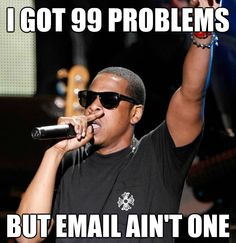So you want to send some emails? Great! I'm excited for you.

But ... (come on you knew something was coming) you need to make sure you are following best practices for sending out those emails. We'll examine the do's and don'ts of CAN-SPAM, the differences between transactional and commercial content, and email opt in practices. I promise it's not as boring as it sounds!
CAN-SPAM Compliance
The CAN-SPAM Act is a law that sets rules for commercial email, establishes requirements for commercial messages, gives recipients the right to have you stop email them, and spells out penalties for violations. Here's a quick Do and Do Not list to follow.
Do These Things
- Identify the message is an ad. No deceptive messaging!
- Tell recipients where you are located. A mailing address is required in your email.
- Allow users to opt out of future messages AND honor those requests promptly (you have 10 days to comply).
Do Not Do These Things
- Use false or misleading from, to, reply-to or routing information. A recipient should be able to easily identify who is sending them an email.
- Use deceptive subject lines. The content inside the email must match the subject line.
Message Types and How CAN-SPAM Applies
There are two basic types of emails: commercial content and transactional/relationship content.
Commercial content is anything that advertises or promotes a product or service. Basically, if you are trying to sell something, it falls into this category.
Transactional content is any email that is required to facilitate a transaction or to update an existing agreement. Emails like order confirmations and tracking numbers are considered transactional information.
There may be a time when these two types are mixed, and you must to decide what the true purpose of your email is. The best way to determine is based on your subject line and how much of the message is dedicated to each type.
Violations aka You Didn't Follow the Rules of Engagement
Get ready to open your wallet wide if you don't comply with these rules. Each separate email in violation is subject to $46,517 in penalties. Let's do some quick math:
You send an email blast to 1,500 users and don't follow the rules and you are fined the maximum allowable amount.
1,500 x $46,517 = $69,775,500 (Yikes!)
You continue to break the rules once a week for the entire year.
$69,775,500 x 52 = $3,628,326,000
If your business has $3 billion to burn in fines to the FTC, maybe you should hire JH to help you out with your marketing and show you how to better spend those dollars.

Now this is an extreme case, and most companies that are fined are sending to way more than 1,500 people at a time. They are blasting messages every hour to hundreds of thousands of users and not allowing them to opt out, which triggers multiple complaints to the FTC for violating the rules.
Give This a Try: Opt In Emails
While email opt outs can bum you out when reviewing your statistics, consider this ... opt outs are probably never going to buy your product or service. By removing these people from your marketing lists mean you have a more targeted audience who will engage, buy, and recommend you to their friends. Those are the people you want to be talking to, so don't let opt outs hurt your feelings.
A good way to ensure you have an engaged subscriber is requesting that users opt in to receive emails from you. Don't assume because they filled out a form that they want to hear from you for the next five years. Users that opt in to receive messages from you are more likely to be brand advocates and repeat purchasers. Stop wasting time on the people who will never buy and focus on the ones who will. Not only that, but you'll save some money by not sending to users who don't want your messages in the first place!

Now go forth and have email sending success.




